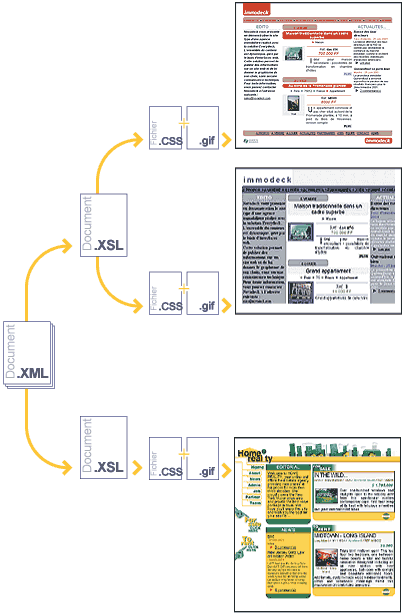 Novadeck Intranet Content Management System is a system for content management and documents exchange for professional intranets. Besides traditional content management tools (publishing, update, multi-lingualism, administration rights management, moderation, content sharing, separation between content and design...), it features an original descriptive approach, the management on a single platform of numerous web sites with various content and the ability to generate sites from a model. It is aimed at companies looking for an efficient intranet distributed among the different entities, and where management, distribution and content sharing are a priority. Novadeck Intranet Content Management System is a system for content management and documents exchange for professional intranets. Besides traditional content management tools (publishing, update, multi-lingualism, administration rights management, moderation, content sharing, separation between content and design...), it features an original descriptive approach, the management on a single platform of numerous web sites with various content and the ability to generate sites from a model. It is aimed at companies looking for an efficient intranet distributed among the different entities, and where management, distribution and content sharing are a priority. |
Distributed intranet for a better knowledge management
A new approach of content management
Each entity of your company wishes to have the use of its own intranet site to publish and update information, and your direction wishes to impose a consistent charta in order to normalize exchanges? Intranet Content Management System by Novadeck enables you to federate information under a common format for autonomous sites hosted p, a single platform, in a single unified database.
| Advantages of such an approach are: |
 |
 |
a single multi-sites platform instead of numerous local servers, locally administered |
 |
 |
 |
each department publishes and manages content in its expertise domain, on its dedicated internal web site, and can manage its section in accordance with its administration rights, following the global charta |
 |
 |
 |
Information can be aggregated on the main unified portal. In reverse, a piece of news can be published on all the sub-sites of each division. |
 |
 |
 |
Each new entity of the company can immediately benefit from a site generated from the model. The site can then evolve depending according to the needs of the entity. |
 |
 |
 |
A search engine on published content gives access to information on a local or global basis. |
 |
 |
According to its company's communication policy, each intranet site can either be truly independent (with its own data structure, its own administration or navigation rights,its own URL or domain name, and of course its own content). It can equally share characteristics imposed by a model, and even share common content, managed on a centralized mode.
Towards efficient knowledge sharing
Each entity of the company can manage its information on its dedicated internal site. One or more administrators can affect editing rights to specialists in precise areas of the site. From there, it is possible to create a true knowledge base, constantly enriched by specialists in each sector. By democratizing access to public information and by encouraging specialists within the company to take part to the content publication, the company builds up its knowledge data, enlarges its global expertise, and condserably reduces the time necessary to find the right information. In reverses, acess to some rubrics or even to some of the sites can be limited in order to keep some private spaces when content is dedicated to a specific working group. Main features of the platfom
Separation between content and presentation
The conception of each content page follows this descriptive approach. It is limited to the description of types of data for each page, possibly under specific conditions, and integrated in a structuring XML framework . The resulting XML content is adapted to the display terminal (web browser, wap, etc.) by applying a standard XSL stylesheet, which enables various layouts of a unique content.
 |
Such an approach features unquestionable advantages: much shorter development time, lower technical level for site's creators, and interfaces' standardization. |
| Use of XSL sheets to change the presentation of a unique XML content |
 |
 |
 |
|
